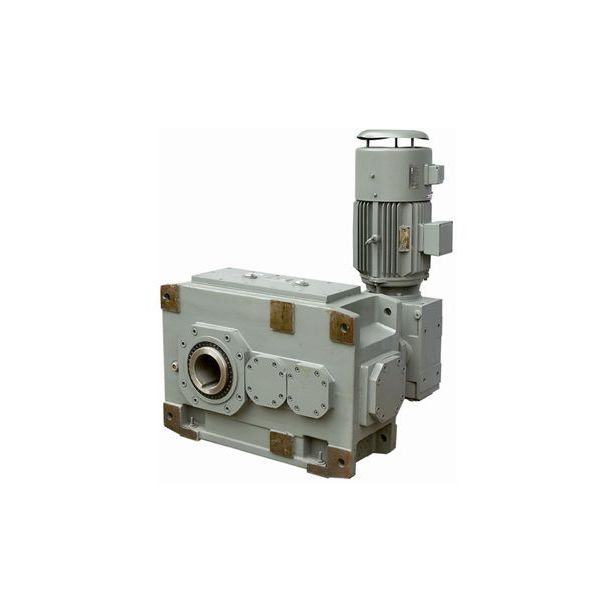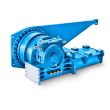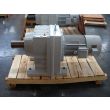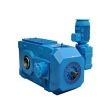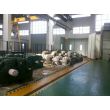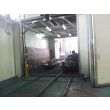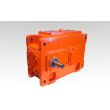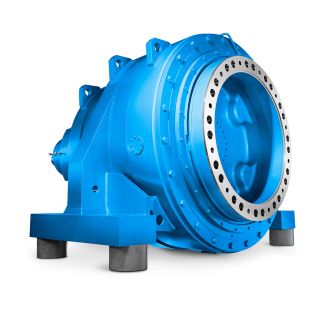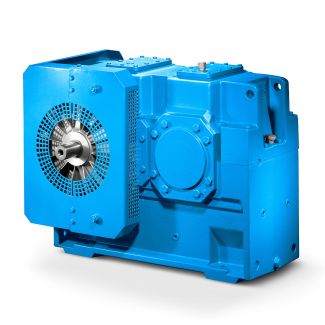H3-FV-18-D flender gearbox singapore Helical gearbox H3
In stock
SKU
H3-FV-18-D
$107,785.71
Flender/Flender Gear Units/Helical gearbox H3
esistance, oxidative properties, lower sludge forming tendency and better foam per-formance. Some lubricants are moving to synthetics using Group III, IV and components. 3 There are two major considerations in the formulation of new industrial gear oils: Increasedemphasisoncost reduction (longer
IV and components. 3 There are two major considerations in the formulation of new industrial gear oils: Increasedemphasisoncost reduction (longer  lubricant life) Designchangestoimprove gearbox efficiency (smaller gearboxes with less oil capacity). The good news is that newer oils are formulated
lubricant life) Designchangestoimprove gearbox efficiency (smaller gearboxes with less oil capacity). The good news is that newer oils are formulated  with high levels of ex-treme-pressure properties across spectrum of viscosities. This gives smaller gearboxes carrying high loads extra protection. But
with high levels of ex-treme-pressure properties across spectrum of viscosities. This gives smaller gearboxes carrying high loads extra protection. But  additives to im-prove extreme-pressure properties can decrease thermal stability , resulting in the formation of sludge. Industrial gear oil additives do exist, however, that provide the balance of thermal stability and extreme-pressure protec-tion. The combination of these two factors adds value by prolonging the life of gearboxes and maximizing effi-ciency . 4,5 Regarding the Asian market, Tam explains, The general trends in Asia are not different from other zones. But more customers in Asia are looking at cost-effective products, which means special and long-drain productsthey would like product developed with their own base oil. Asian customers are always interested in long-drain in-tervals, energy efficiency , low cost, OEM approval and high loading. The trend toward lowering gearbox manufacturing costs, while at the same time allowing for increased in-use pro-ductivity , places even more stringent demands on gear oils. This means high load-carrying capabilities that main-tain gearbox cleanliness will be the norm for gear oils. & inhibiTing gear oilS . Rust and oxidation (&) inhibiting gear lubri-cants perform well over range of gear sizes, speeds and outside temperatures. They lubricate well if both the gears and bearings are lubricated from the same reservoir. Because they do not adhere to the gear tooth surface, its best if the gear teeth are constantly rel
additives to im-prove extreme-pressure properties can decrease thermal stability , resulting in the formation of sludge. Industrial gear oil additives do exist, however, that provide the balance of thermal stability and extreme-pressure protec-tion. The combination of these two factors adds value by prolonging the life of gearboxes and maximizing effi-ciency . 4,5 Regarding the Asian market, Tam explains, The general trends in Asia are not different from other zones. But more customers in Asia are looking at cost-effective products, which means special and long-drain productsthey would like product developed with their own base oil. Asian customers are always interested in long-drain in-tervals, energy efficiency , low cost, OEM approval and high loading. The trend toward lowering gearbox manufacturing costs, while at the same time allowing for increased in-use pro-ductivity , places even more stringent demands on gear oils. This means high load-carrying capabilities that main-tain gearbox cleanliness will be the norm for gear oils. & inhibiTing gear oilS . Rust and oxidation (&) inhibiting gear lubri-cants perform well over range of gear sizes, speeds and outside temperatures. They lubricate well if both the gears and bearings are lubricated from the same reservoir. Because they do not adhere to the gear tooth surface, its best if the gear teeth are constantly rel| Model Type | Helical gearbox H3 |
|---|---|
| Gear Type | Helical Gear |
| Weight (kg) | 5030.000000 |
| Ratio Range | 1 : 25…100 |
| Low Speed Output | Flanged shaft |
| Nominal Torque | 240000 Nm |
| Mounting Arrangements | Vertical mounting position |
| Manufacturer | flanders electric peru s a c |
| Country of Manufacture | Samoa |
| Data Sheet & Drawings | H3-FV-18-D flender gearbox singapore Helical gearbox H3 |
